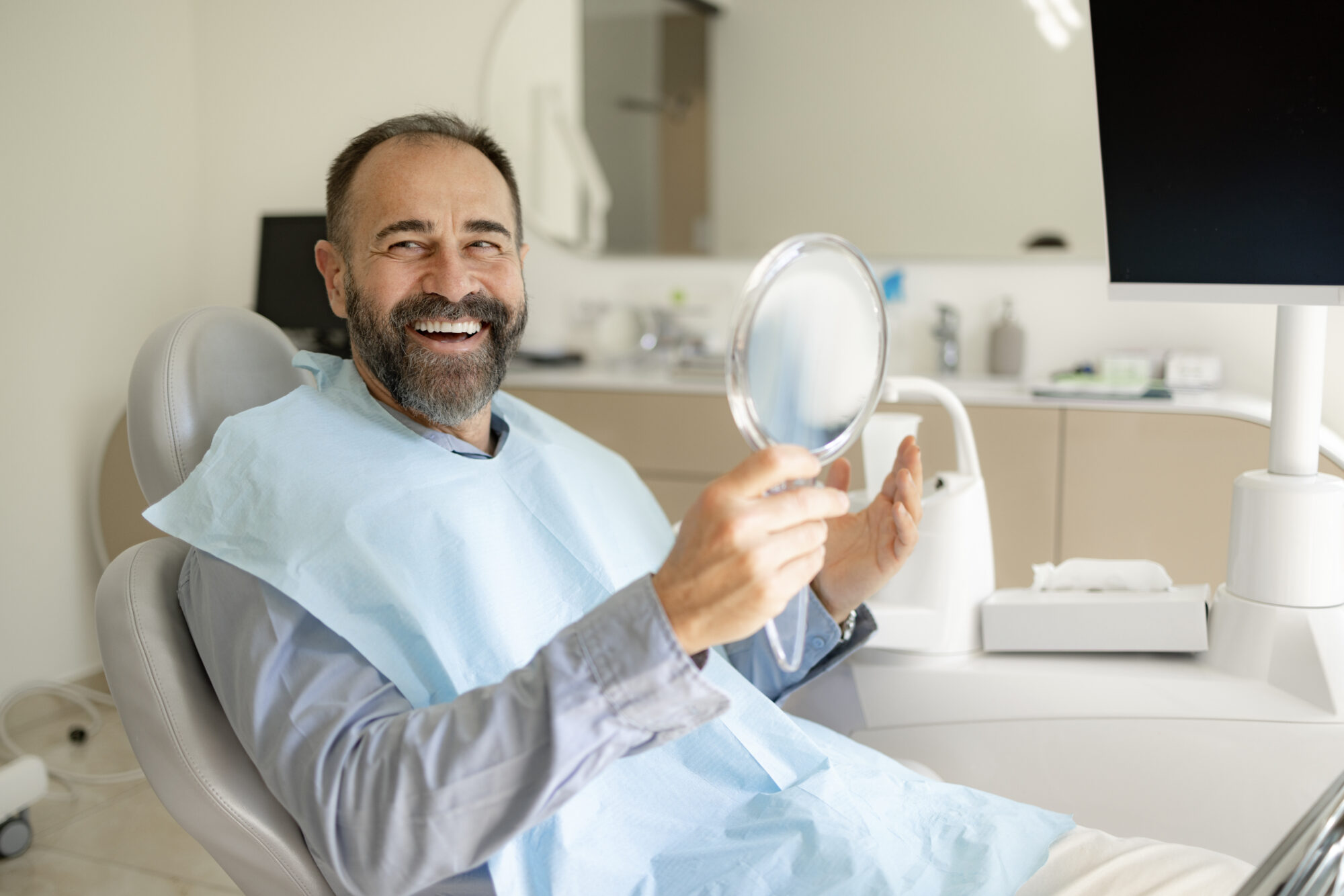How Treatment Can Help
Sleep apnea is a condition that affects millions of people worldwide. It is characterized by pauses in breathing during sleep, which can lead to a range of health problems, including fatigue, high blood pressure, and an increased risk of heart disease. While the condition is often associated with other factors like obesity or nasal obstructions, there’s a lesser-known connection between sleep apnea and orthodontics. For individuals with certain types of misaligned jaws, orthodontic treatment can provide significant relief from the symptoms of sleep apnea. In this blog, we will explore how orthodontic treatments can help alleviate sleep apnea and improve overall health.
What is Sleep Apnea?
Sleep apnea is a sleep disorder that causes interruptions in breathing while asleep. These pauses in breathing can last from a few seconds to minutes and may occur multiple times throughout the night. The most common form of sleep apnea is obstructive sleep apnea (OSA), which happens when the muscles at the back of the throat relax too much during sleep, causing a temporary blockage of the airway.
People with OSA often snore loudly and experience fragmented sleep, which leads to excessive daytime sleepiness. While it is common among adults, it can affect people of all ages, including children. Other forms of sleep apnea, such as central sleep apnea (caused by a failure in the brain’s breathing regulation) and complex sleep apnea syndrome (a combination of obstructive and central sleep apnea), are less common.
The Link Between Jaw Alignment and Sleep Apnea
The anatomy of your mouth and jaw plays a significant role in the development of sleep apnea. In some cases, misaligned jaws—particularly a retrusive (or recessed) lower jaw— can obstruct the airway, contributing to breathing difficulties during sleep. When the lower jaw is positioned too far back, the airway becomes constricted, making it harder for air to flow freely. This can lead to breathing interruptions and snoring, which are hallmarks of sleep apnea.
For many people with sleep apnea, jaw misalignment is one of the key contributing factors. Conditions such as class II malocclusion (where the upper jaw protrudes over the lower jaw) or class III malocclusion (where the lower jaw is too far forward) can cause the airway to narrow, increasing the likelihood of airway obstruction during sleep. Additionally, an overbite or underbite can interfere with how the tongue sits in the mouth, further contributing to breathing problems.
This is where orthodontics can help. By addressing jaw misalignments through treatment, orthodontists can play a crucial role in improving airway space and helping to alleviate sleep apnea symptoms.
How Orthodontics Can Help with Sleep Apnea
Orthodontic treatment focuses on correcting the alignment of the teeth and jaws. For patients suffering from sleep apnea, orthodontic care can involve various strategies aimed at improving the airway and ensuring more comfortable, uninterrupted breathing during sleep. Here are some common ways orthodontic treatment can help manage sleep apnea:
1. Jaw Repositioning through Orthognathic Surgery
In more severe cases of jaw misalignment, orthognathic surgery (jaw surgery) may be necessary to reposition the upper and lower jaws. Surgery is typically used when the patient’s airway is severely obstructed due to a structural issue with the jaw. The goal of the surgery is to realign the jaws to create more space for airflow and reduce the likelihood of airway collapse during sleep.
This type of surgery is generally recommended when non-surgical methods, such as braces or appliances, are not enough to correct the issue. When combined with orthodontic treatment, orthognathic surgery can improve both the aesthetics of the patient’s smile and the functionality of their airway, leading to better sleep and a reduced risk of sleep apnea.
2. Expanding the Upper Jaw with Palatal Expanders
In some cases, the upper jaw may be too narrow, contributing to a restricted airway. A narrow palate can limit the space available for the tongue and soft tissues in the mouth, increasing the likelihood of airway obstruction during sleep. A palatal expander is an orthodontic device used to widen the upper jaw. By gradually expanding the palate, the expander creates more room for the tongue and other structures, which can help alleviate some of the breathing problems associated with sleep apnea.
Palatal expanders are typically used in children, as their jawbones are still developing, but they can also be effective in adults with milder forms of sleep apnea. In both cases, this treatment helps open the airway, making it easier for air to pass through while sleeping.
3. Correcting Bite Problems
Misaligned bites, such as an overbite, underbite, or crossbite, can also contribute to sleep apnea. These issues can affect the positioning of the jaw and tongue, which in turn impacts airflow during sleep. Orthodontic treatment with braces or aligners can help correct bite problems by realigning the teeth and jaws. In some cases, this simple intervention may be
enough to reduce sleep apnea symptoms, especially when combined with other treatments like a CPAP machine (Continuous Positive Airway Pressure) or lifestyle changes.
Braces and clear aligners, such as Invisalign, can shift teeth into better positions, improving jaw alignment and promoting better airflow. In particular, patients with an overbite may benefit from orthodontic treatment, as it can bring the lower jaw forward to help open the airway.
4. Using Mandibular Advancement Devices
In cases where jaw misalignment is contributing to sleep apnea, an orthodontist may recommend a mandibular advancement device (MAD). This is a custom-made oral appliance designed to reposition the lower jaw slightly forward during sleep. By doing so, the device helps keep the airway open and reduces the likelihood of obstruction.
MADs are often used to treat mild to moderate obstructive sleep apnea, especially in patients who do not want to use a CPAP machine. They are an excellent alternative to more invasive treatments and can be worn comfortably during sleep. Orthodontists can work with patients to ensure that the device is properly fitted and provides the necessary support for optimal airflow.
Benefits of Orthodontic Treatment for Sleep Apnea
Orthodontic treatments can offer several benefits for individuals with sleep apnea, including:
- Improved airflow and breathing: By addressing jaw misalignment, orthodontic care can help open the airway, making it easier for air to flow during sleep.
- Better quality of sleep: With reduced airway obstruction, patients often experience fewer interruptions in their sleep, leading to improved rest and less daytime fatigue.
- Reduced snoring: As airflow improves, patients may notice a significant reduction in snoring, which can be a major benefit for both the patient and their bed partner.
- Enhanced overall health: By improving sleep quality and reducing sleep apnea symptoms, orthodontic treatment can lower the risk of developing cardiovascular problems, high blood pressure, and other health issues associated with untreated sleep apnea.
- Non-invasive treatment options: Orthodontic solutions like expanders and mandibular advancement devices can offer a non-surgical alternative to treating sleep apnea, providing patients with a less invasive way to manage the condition.
Conclusion
Sleep apnea is a serious condition that can have wide-ranging effects on your health and quality of life. While it is often treated with devices like CPAP machines or lifestyle changes, orthodontic treatment can also play a key role in addressing the underlying causes of the condition, particularly in cases where jaw misalignment is a contributing factor.
Through jaw repositioning, bite correction, and the use of appliances like palatal expanders and mandibular advancement devices, orthodontic treatment can help alleviate the symptoms of sleep apnea, improve airflow, and enhance overall health. If you suffer from sleep apnea and suspect that jaw alignment may be contributing to the problem, consult with an orthodontist to explore how treatment may benefit you.
By addressing both the structural issues in the mouth and jaw and providing personalized solutions, orthodontic care can offer a more restful, healthier, and more fulfilling life.
 919-338-5650Free Consult
919-338-5650Free Consult


